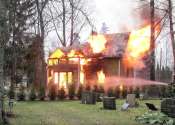An engine cover on a Southwest Airlines plane rips off, forcing the flight to return to Denver
A Southwest Airlines jet returned to Denver Sunday morning after the engine cover fell off and struck the wing flap during takeoff, according to the Federal Aviation Administration.
Apr 8, 2024
0
28









